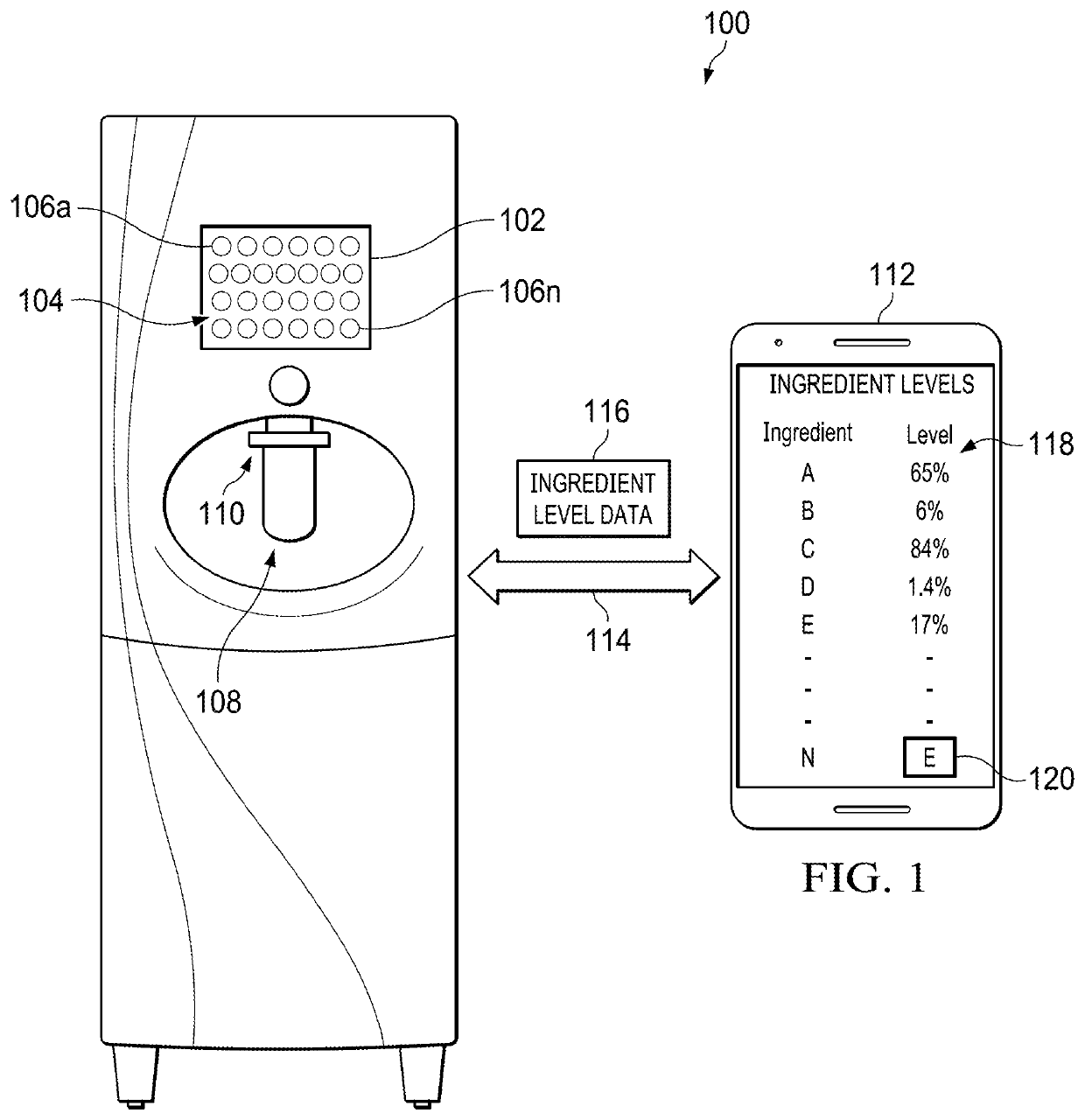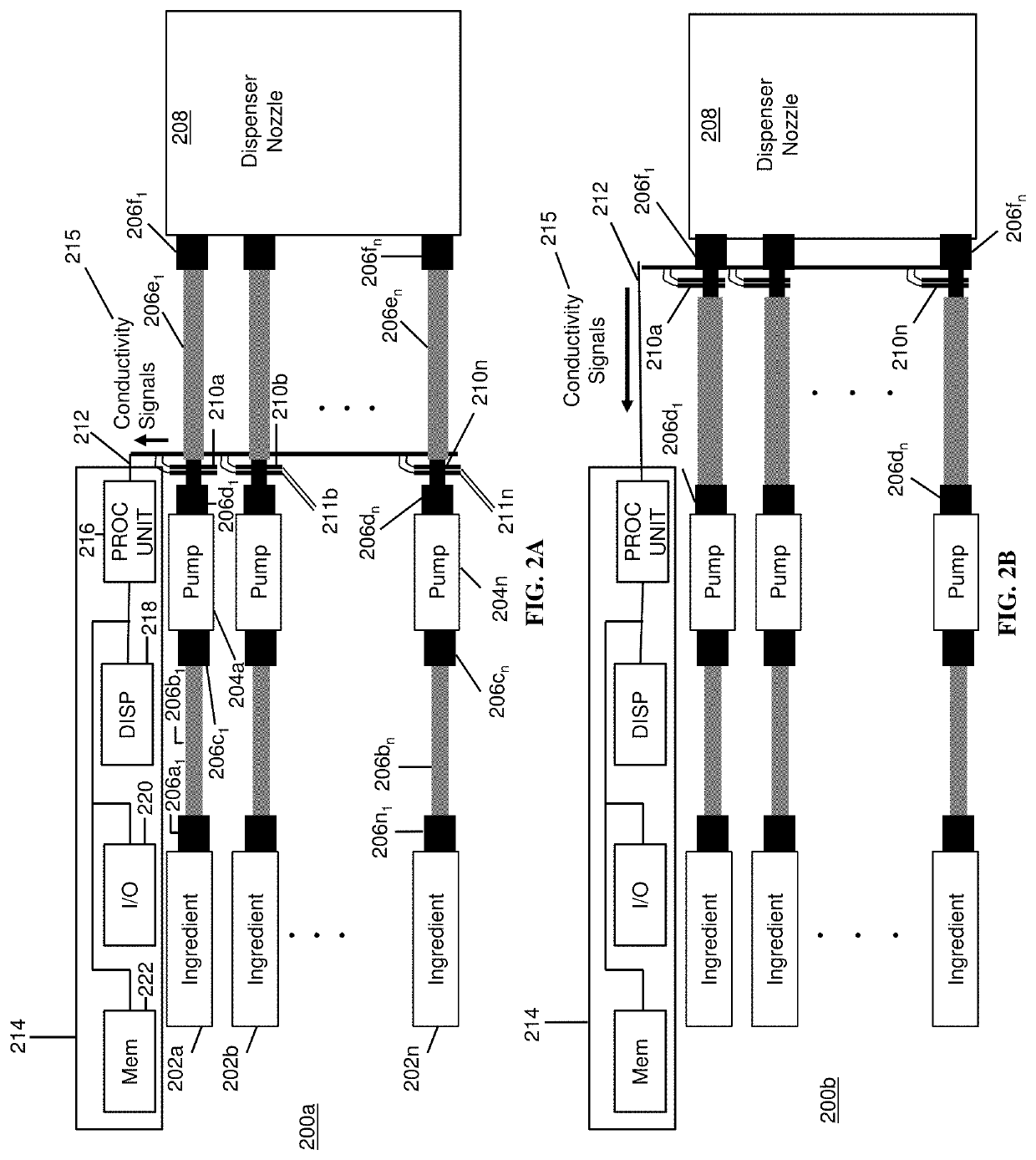Sold out detection using a level sensor for a beverage dispenser
a level sensor and beverage dispenser technology, applied in the direction of packaging, liquid dispensing, transportation and packaging, etc., can solve the problems of affecting the quality of the ingredients, the customer's immediate branding of the beverage, and the current advanced dispenser is expensive to build and maintain, so as to achieve a robust and cost-effective beverage dispenser. , the effect of cost-effectiv
- Summary
- Abstract
- Description
- Claims
- Application Information
AI Technical Summary
Benefits of technology
Problems solved by technology
Method used
Image
Examples
Embodiment Construction
[0035]With regard to FIG. 1, an illustration of an illustrative beverage dispenser 100 inclusive of a resistance or electrical conductivity sensor for monitoring fluid ingredient level status is shown. As understood in the art, beverage dispensers are used for enabling food outlets to dispense beverages inclusive of brands and flavors to customers. Beverage dispensers have a wide range of capabilities, and newer more advanced beverage dispensers provide an electronic display 102 on which a user interface 104 enables users to select from multiple available beverage brands and / or flavors. The beverage dispenser 100 is an advanced beverage dispenser, and is configured to dispense both micro and macro ingredients. The user interface 104 may be displayed with selectable icons 106a-106n (collectively 106) of beverages available to be dispensed by the dispenser 100 are shown. A user may select one of the icons 104 to activate a pump (see FIGS. 2A and 2B) to cause one or more fluid ingredie...
PUM
 Login to view more
Login to view more Abstract
Description
Claims
Application Information
 Login to view more
Login to view more - R&D Engineer
- R&D Manager
- IP Professional
- Industry Leading Data Capabilities
- Powerful AI technology
- Patent DNA Extraction
Browse by: Latest US Patents, China's latest patents, Technical Efficacy Thesaurus, Application Domain, Technology Topic.
© 2024 PatSnap. All rights reserved.Legal|Privacy policy|Modern Slavery Act Transparency Statement|Sitemap



